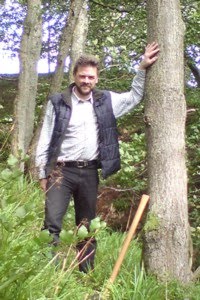It is spring, the swallows have returned to the farm, so it
is time for a mission statement, or an explanation what after 8 years on the
internet Theoretical Structural Archaeology is all about, again.
In essence it very simple, just as knowledge of potting is
necessary for understanding pottery, so understanding engineering is important
for a archaeologists dealing with the archaeological remains of engineered
environments. However, this really about
being able to think like potter or an engineer, it concerns archaeology as a
mind-set rather than a written subject. Not that it is actually that technical, given the sorts of
the data sets we recover, and of course it is only one of many core skills required
for field archaeology. The key point to
grasp, at least in principle, is that engineered structures can be described
mathematically, and therefore can be modelled.

























